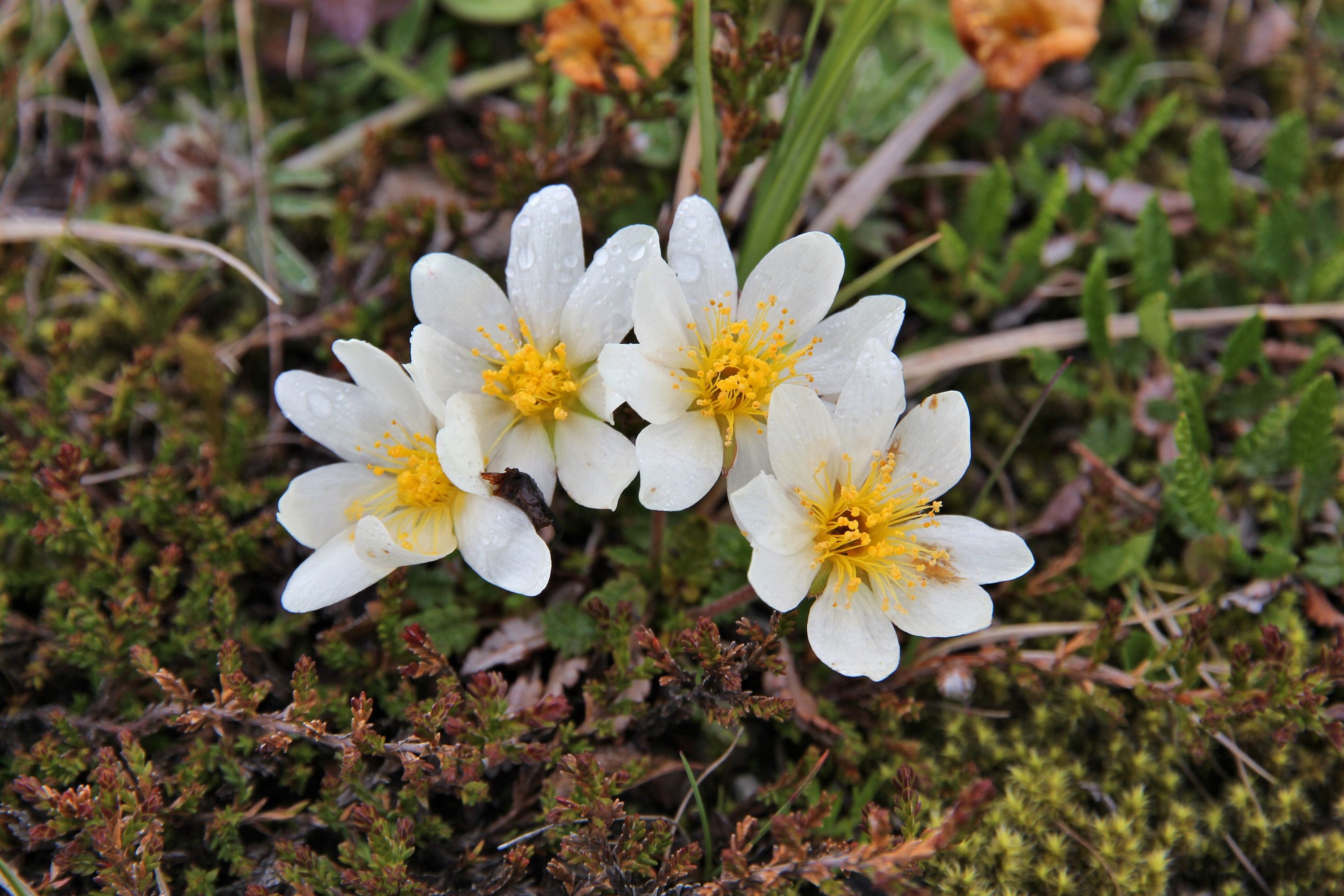Mountain avens
(Dryas octopetala)

Description
Dryas octopetala, commonly known as mountain avens or white dryas, is a small, creeping subshrub that belongs to the Rosaceae family. This species is native to the arctic and alpine regions of North America, Europe, and Asia, where it can be found growing in rocky and gravelly habitats, often in high altitudes. Taxonomy and naming Dryas octopetala was first described by Carl Linnaeus in 1753 in his book Species Plantarum. The genus name Dryas is derived from the Greek word "dryos", meaning oak, due to the resemblance of the leaves to those of some oak trees. The species name octopetala means "eight-petaled", referring to the number of petals in the flowers. Description Mountain avens is a low-growing subshrub that reaches a height of 5 to 20 cm. It has woody stems that are covered with fine hairs and can form dense mats on the ground. The leaves are evergreen, leathery, and have a glossy dark green color. They are alternate, simple, and oval in shape, with serrated edges, and can measure 1.5 to 4 cm in length. The flowers of Dryas octopetala are large, showy, and white in color, with eight petals arranged in a cup-like shape. They appear in early summer and can measure up to 4 cm in diameter. The center of the flower contains numerous yellow stamens and a single pistil. The fruit is a dry, one-seeded achene that is dispersed by the wind. Distribution and habitat Mountain avens is a circumpolar species that can be found in the arctic and alpine regions of North America, Europe, and Asia. It is commonly found in rocky and gravelly habitats, such as scree slopes, rock outcrops, and alpine meadows. It can tolerate extreme weather conditions and can grow at high altitudes, reaching up to 4,000 meters above sea level. Ecology and uses Dryas octopetala is an important plant in arctic and alpine ecosystems, where it serves as a food source for herbivores, such as caribou, muskoxen, and arctic hares. The leaves are also used by indigenous peoples in northern regions for medicinal purposes, as they contain high levels of tannins, which have astringent properties. In addition to its ecological and medicinal uses, mountain avens is also used in horticulture as a ground cover in rock gardens or alpine plantings. It is a hardy and low-maintenance plant that can tolerate poor soil conditions and cold temperatures. Threats and conservation Dryas octopetala is not considered a threatened species, as it has a wide distribution and can tolerate harsh environmental conditions. However, climate change and habitat degradation caused by human activities, such as mining and tourism, can have negative impacts on its populations. Therefore, it is important to monitor the distribution and abundance of this species and take measures to protect its habitats. Conclusion Dryas octopetala is a fascinating plant that is adapted to extreme weather conditions and plays an important role in arctic and alpine ecosystems. Its evergreen leaves, showy flowers, and hardy nature make it a popular choice in horticulture, while its medicinal properties have been valued by indigenous peoples for centuries. Despite its resilience, the threats posed by climate change and human activities highlight the need for conservation efforts to protect this important species and its habitats.
Taxonomic tree:







